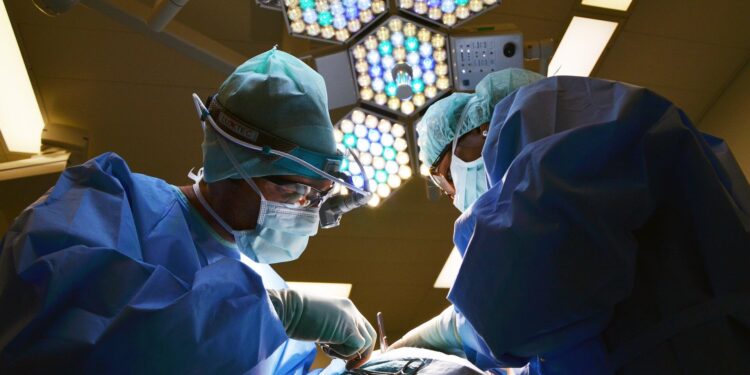Credit: Public Pixabay / CC0 domain
Investigators from the Harvard Medical School have discovered that US surgeons have a cancer mortality rate more than twice that of doctures not punishment and about 20% higher than most non -doctors. While maintaining mortality rates lower than non-medicines, unexpected cancer rates could shed light on work-related risks.
In the study, “mortality among surgeons in the United States”, published in Jama surgeryThe researchers analyzed the data available on the population to assess the rates and the main causes of death in surgeons.
Investigators evaluated the death files for 1,080,298 people aged 25 to 74 drawn from the national system of cistric statistics 2023, including 224 surgeons and 2,740 other doctors.
The files of the death certificate provided age, sex, the underlying cause of death and the usual occupation. The population denominators were taken from the investigation into the American community of 2023 and transverted with the AMA master doctor.
Comparison groups included doctors not assurted, other professionals (lawyers, engineers, scientists) and all other workers. Investigators calculated mortality per 100,000 inhabitants using age and gender standardization for the 2000 standard American population and calculated mortality rate ratios (MRR).
The surgeons recorded 355.3 deaths per 100K against 228.4 per 100k among doctors not of the assurted, which gives an MRR of 1.56. Mortality among surgeons has remained much lower than the rates for all other workers (632.5 per 100k) and looked like that of lawyers, engineers and scientists, who measured 404.5 (0.88 MRR).
Doctors not punishment were the least likely to die in a car accident at 3.4 per 100k. Surgeons have experienced a much higher rate at 13.4 per 100k, making it the cause of the classified death of the 4th for the group, while it ranked 9th among all the other groups.
This higher ranking does not indicate that surgeons are more prone to driving accidents. In fact, they have less death by 100K in this category than all other groups of workers (13.4 against 16.6). Rather, it reflects a rearrangement of the rankings due to the decrease in the death rates of more common causes in other groups.
For example, the 4th cause of death of other workers is respiratory diseases with 27 per 100k, while for surgeons, it ranks 14th at 0.6 per 100k, making it the least at risk. Other doctors were three times the surgeon’s rate, at 1.8 for 110k.
Surgeons were also the least likely group to die of flu, kidney disease, liver disease, sepsis and diabetes. Diabetes mortality rates were remarkably low in surgeons at 1.6 per 100k (classified 11th per cause), compared to all other workers at 23.8 (5th classified) and other doctors at 6.9 (6th classified).
A great aberrant value appears during the comparison of death by cancer. Cancer mortality (specific neoplasm) in surgeons recorded 193.2 per 100K against 87.5 in doctures not of punishment, corresponding to an MRR of 2.21. Cancer is the only category in which surgeons have shown a higher rate than all other workers (162.0 per 100k).
The authors suggest that knowledge and health resources of all surgical and non -surgical doctors are similar. The elimination of excess of 105.7 cancer deaths per 100K would place surgeons and other doctors on quasi-level mortality rates, which arouses concern that specific work factors can lead to excess cancer deaths.
Written for you by our author Justin Jackson, edited by Sadie Harley, and verified and revised by Robert Egan – This article is the result of meticulous human work. We are counting on readers like you to keep independent scientific journalism alive. If this report matters to you, please consider a donation (especially monthly). You will get a without advertising count as a thank you.
More information:
Vishal R. Patel et al, mortality among surgeons in the United States, Jama surgery (2025). DOI: 10.1001 / JAMASURG.2025.2482
© 2025 Science X Network
Quote: Surgeons run a higher risk of cancer, suggest the study (2025, August 4) recovered on August 5, 2025 from
This document is subject to copyright. In addition to any fair program for private or research purposes, no part can be reproduced without written authorization. The content is provided only for information purposes.



